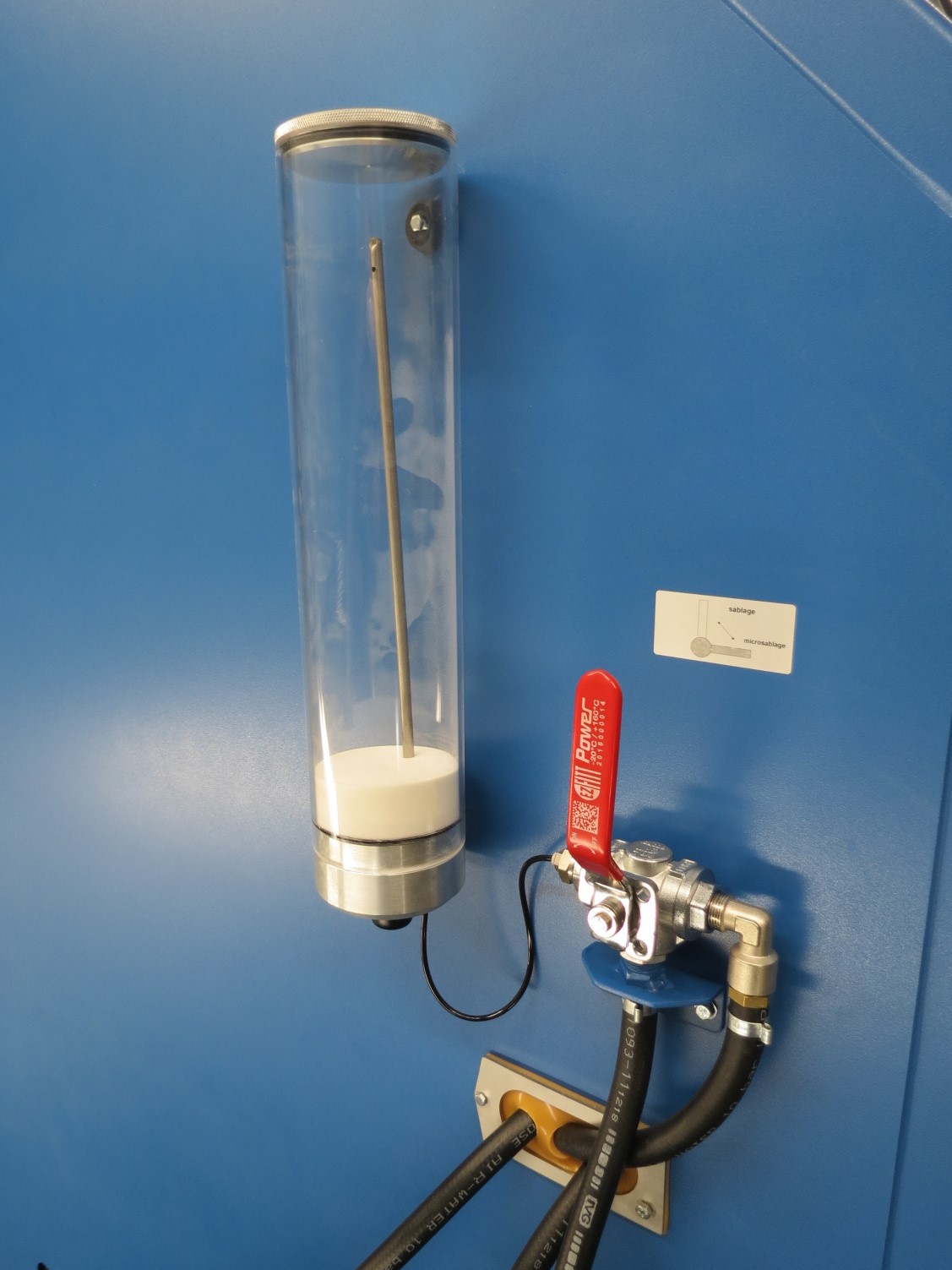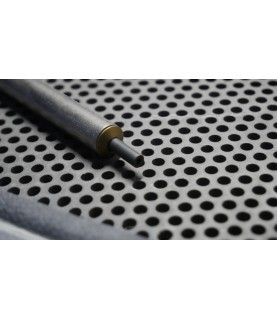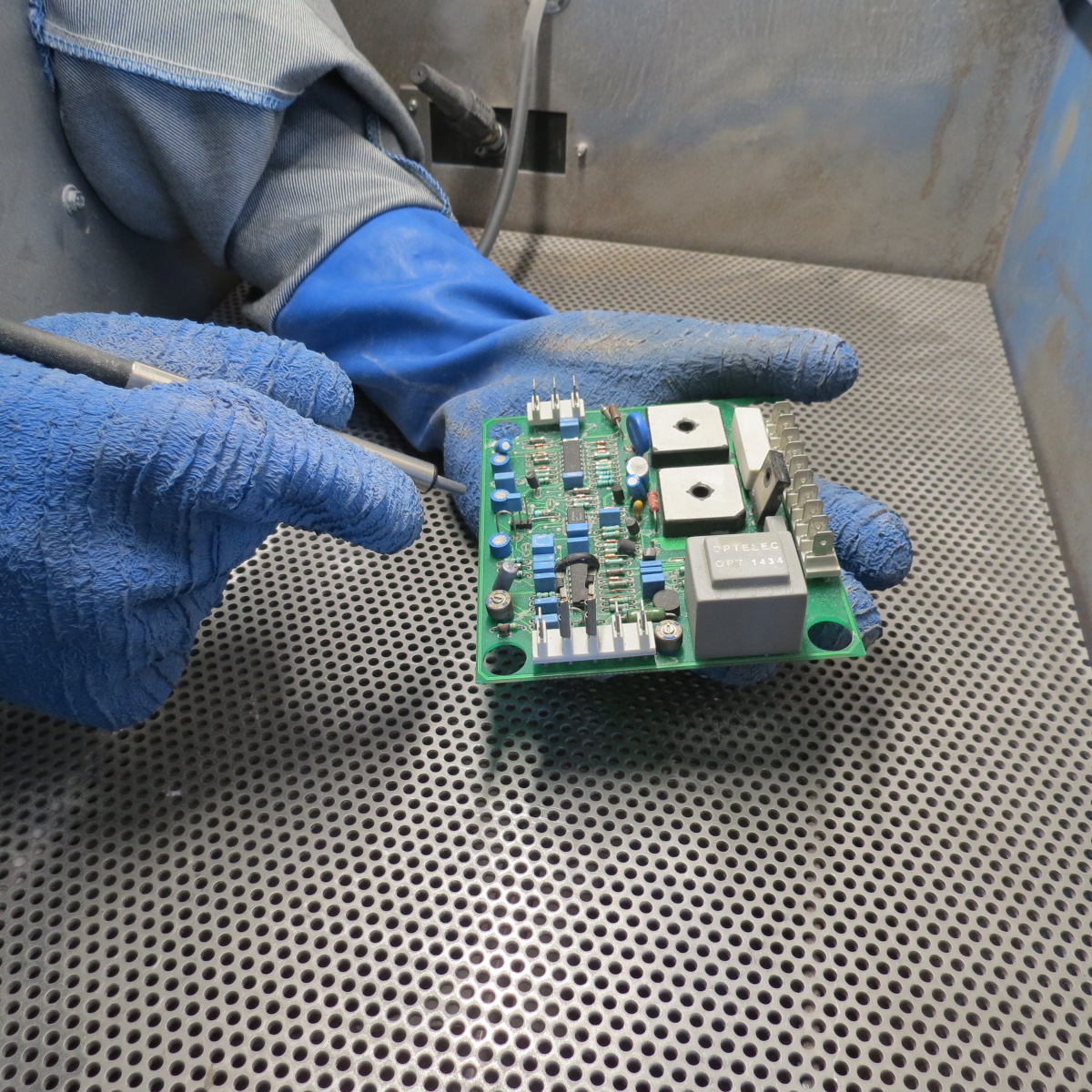Micro Sandblasting
Micro sandblasting is an impact surface treatment option that uses abrasives sprayed at high speeds to strip and clean various surfaces. This method is widely used in many industrial sectors for its accuracy and efficiency.
What is micro sandblasting?
Micro sandblasting, also known as high-precision airblasting, is a mechanical stripping process that uses microbeads or other types of abrasives sprayed by a jet of compressed air. The venturi effect, an air supply that sucks the abrasive into the nozzle to project it, is very often used in this type of sandblasting. Unlike traditional sandblasting, micro sandblasting is gentler and allows you to work on fragile surfaces without damaging them. This technique is ideal for cleaning small parts and delicate surfaces.
Micro sandblasters are specialized tools that project abrasives through a very small nozzle, often a few millimeters in diameter. Commonly used abrasives include corundum, glass beads, baking soda, vegetable abrasive. These materials allow surfaces to be stripped without causing significant damage since the projection is located on a very small surface of mechanical parts and metal surfaces.
Which abrasives for micro sandblasting?
Very fine abrasives should be used because the small nozzle will not allow the projection of too large abrasives.
Brown and white corundum, such as brown fused alumina or white fused alumina, of grade 220 are ideal. The grade 220 glass bead can be used in the case of bead blasting, and also the ceramic bead too.
Plastic media abrasives will not work because they require higher intensity spraying for scrubbing. Type of pressurization and sandblasting machine at a minimum of 4 to 5 bar.
Vegetable abrasive is a possible solution for gentle sanding with a product from the circular economy because it comes from walnut shells.
Finally, baking soda is a solution for scrubbing and surface cleaning. It is a very mild abrasive, not corrosive and therefore ideal for surfaces of great fragility.
When is it better to opt for micro sandblasting?
In some specific applications, standard blast nozzles are not thin enough to meet the precision demands of certain jobs.
It is for these reasons that there are micro sandblasting nozzles. They have a small diameter and allow precision sandblasting for small parts or on very small surfaces.
At ARENA BLAST we have developed a CR17C type option, micro-sandblasting pencil, which can be adapted to each of our bag booths. In this configuration, the nozzle with a standard diameter acts as the main nozzle and a 1.7mm diameter micro blasting nozzle is additionally installed as a booster nozzle.
It is an option that can be equipped in two times on the same cabin, which allows sandblasting, or aerogumming, with 2 different abrasives without having to empty the abrasive tank all the time.
Find more information about the micro-sandblasting pencil option here:
Generally, micro blasting nozzles are useful for precision blasting, on small parts or with many angles.
Here are some examples of applications and important aspects of micro sandblasting:
1. Surface treatment by impact on fragile parts: Micro sandblasting is ideal for fragile parts that do not support high-pressure sandblasting. It allows you to clean without the risk of damaging the surface.
2. Small Area Stripping: For small areas or small parts, micro sandblasting offers unmatched precision. It is often used in the watch and electronics industry. The sandblasting of steel or stainless steel parts or the realization of aesthetic effects on glass are also possible by micro sandblasting.
3. Electronic board renovation: This application allows you to remove the electrical components of a board without damaging the surface. Via the projection of a vegetable or glass microbead type abrasive, the varnish is removed and allows the defective component to be removed and replaced with a new one. This avoids throwing away the electronic card and therefore encourages the circular economy and recycling.
4. Restoration of parts: Sandblasting with micro nozzles makes it possible to treat very small surfaces or gaps that are not easily accessible by abrasive projection. It also makes it possible to restore parts that cannot be done by high-intensity sandblasting or by traditional nozzles
5. Sandblasting in the luxury and jewelry industry: to microbead the pieces to obtain a homogeneous and clean surface appearance.
How does a micro sandblasting booth or a booth with the micro blasting pencil option work?
Micro blasting booths work like standard bag booths. They are vacuum machines; This means that the abrasive is sucked in from the bottom of the hopper via a venturi effect and is projected onto the workpiece to be treated. The machines dedicated to micro blasting are generally small in size (width 600 mm and 700 mm) but there are also micro blasting rods that can be installed on a larger handle booth.
The important elements for the proper functioning of a micro blasting handle booth are:
- The compressor that provides the compressed air necessary for the abrasive to be sprayed.
- The sandblasting gun including the small nozzle, otherwise known as the micro sandblasting pencil. The gun is connected to the compressor via the air inlet. It uses the venturi effect allowing the abrasive to be projected via a suction effect generated by the air inlet.
- the sandblasting nozzle: this is composed of at least tungsten carbide at ARENA BLAST but can also be , for the more entry-level machines on the ceramic market. This material is much less resistant than tungsten or boron carbide used in industrial or professional applications.
- the abrasive tank: it allows the abrasive to be contained to be projected by the small sandblasting pipe. Via a dip tube that allows an air intake, and by the Venturi effect, the abrasive is sucked up directly from the pot.
- the cabinet: it must be 100% airtight to avoid any leakage and therefore dust discharge outside the sandblasting chamber. This is to avoid the risk of inhalation by the operator. At ARENA BLAST all of our crates are designed and manufactured in our workshop. The putty and welding are done by our very competent teams and therefore ensure perfect airtightness.
- Abrasive recovery and dust removal system: Sandblasting cabinets are often equipped with abrasive recovery systems. These systems allow the abrasives used to be collected and recycled, reducing costs and waste.
- Filtration system: To ensure a clean and safe working environment, all ARENA BLAST blast cabinets are equipped with filtration systems that capture dust and fine particles generated during the blasting process. The filter cartridges are for the more high-end models equipped with an automatic cleaning system.
Conclusion of micro sandblasting
In conclusion, micro sandblasting is a high-precision and delicate surface treatment technique. It is therefore perfect for stripping, recycling, and precision renovation work on fragile surfaces. It is a gentler and more controlled alternative to traditional sandblasting. Micro blasting booths, equipped with compressors, blast guns, and filtration systems, provide a safe and efficient working environment to perform high-quality blasting work. Whether it is for the cleaning of mechanical parts, the preparation of surfaces, or the stripping of delicate surfaces, micro sandblasting is a solution of choice for many industries.
Contact us for more information about our sandblasting machines, micro sandblasting options.
Discover our machines
Since 1979 all our machines are designed and produced in our factory in the North of France.




